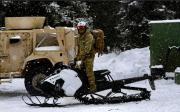I am a true believer in the "True n' Glue".
FWIW, the various lapping tool's , I have tried, have certain uppers they worked well with.
Brownells, thermal fit uppers like BCM
PTG , used to work well with non-thermal fit uppers.. I say used to , because they sell to different sizes now.
The Caldwell ( cheap ) lapping tool, was such a poor fit, I could see doing more damage than good.
I also do not place the upper in a vice, while lapping. I turn the upper vertical and use a low speed setting cordless drill. That way I can feel any "odd" binding. Be sure to lube the lapping tools shaft.
FWIW... and while far from scientific, here is a PSA 20" OEM barrel 6.5CM before and after TnG ( True and Glue ). The thread is a little choppy.... but I don't write for a living. Lol
Not every factory load responded well to the TnG, but... many did group far better after.
And the odd ball fliers seemed to occur less often.
Enjoy the read...
https://www.ar15.com/forums/industry...s-/301-285762/




 Reply With Quote
Reply With Quote

